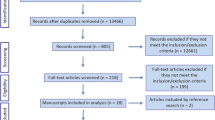Summary
To evaluate the characteristics of stereotyped movement of the lower limb during treadmill walking, the step length and duration of 200 steps were monitored consecutively and calculated by means of a computerized system, consisting of a position sensor, shoes with foot switches and a minicomputer. Eleven male and 10 female subjects walked at various constant speeds ranging from 60–130 m · min−1. Mean, standard deviation (SD) and coefficient of variation (CV) of the time-distance component at each speed were utilized for the assessment of stereotyped movement. When compared with males, females had a tendency to increase their speed by increasing their cadence. The difference of the walking pattern was specifically related to their height. The SD and CV of the time-distance component at a given speed were significantly greater in females than in males. Regression analyses revealed that in the relationship between the walking speeds and the SDs or CVs of the time-distance component, the significant quadratic equations could be fitted. The speed, at which the SD of step length was minimum, was estimated to be about 90 m · min−1 in both males and females. This was regarded as the free walking speed or as the walking speed resulting from a mechanically efficient step length which suited the subject's body size.
Similar content being viewed by others
References
Bobbert AC (1960) Energy expenditure in level and grade walking. J Appl Physiol 15:1015–1021
Booyens J, Keatinge WR (1957) The expenditure of energy by men and women walking. J Physiol 138:165–171
Cotes JE, Meade F (1960) The energy expenditure and mechanical energy demand in walking. Ergonomics 3:97–119
Crowinshield RD, Brand RA, Johnson RC (1978) The effects of walking velocity and age on hip kinematics and kinetics. Clin Orthop 132:141–144
Dean GA (1965) An analysis of the energy expenditure in level and grade walking. Ergonomics 8:31–47
Grieve DW, Gear RJ (1966) The relationships between length of stride, step frequency, time of swing and speed of walking for children and adults. Ergonomics 5:379–399
Katoh Y, Chao EYS, Laughman RK, Schneider E, Morrey BF (1983) Biomechanical analysis of foot function during gait and clinical applications. Clin Orthop 177:23–33
Lamoreux LW (1971) Kinematic measurements in the study of human walking. Bull Prosthet Res BPR San Francisco 10:3–84
Merrifield HH (1971) Female gait patterns in shoes with different heel heights. Ergonomics 14:411–417
Milner M, Quanbury AO (1970) Facets of control in human walking. Nature 227:734–735
Milner M, Basmajian JV, Quanbury AO (1971) Multifactorial analysis of walking by electromyography and computer. Am J Phys Med 50:235–258
Murray MP, Drought AB, Kory RC (1964) Walking patterns of normal men. J Bone Joint Surg 46-A:335–360
Murray MP, Kory RC, Clarkson BH, Sepic SB (1966) Comparison of free and fast speed walking patterns of normal men. Am J Phys Med 45:8–24
Murray MP, Kory RC, Clarkson BH (1969) Walking patterns in healthy old men. J Gerontol 24:167–178
Murray MP, Kory RC, Sepic SB (1970) Walking patterns of normal women. Arch Phys Med 51:637–650
Ralston HJ (1958) Energy-speed relation and optimal speed during level walking. Int Z Angew Physiol 17:277–283
Rosenrot P, Wall JC, Charteris J (1980) The relationship between velocity, stride time, support time and swing time during normal walking. J Hum Mov Stud 6:323–335
Sasaki T, Teruya T, Tashiro Y, Hayashi S, Yamada K (1957) Relation of energy metabolism of walking to ability to work. Jpn J Phys Educ 2:177–180
Slaton DS (1985) Gait cycle duration in 3-year-old children. Phys Ther 65:17–21
Smidt GL, Wadsworth JB (1973) Floor reaction forces during gait: comparison of patients with hip disease and normal subjects. Phys Ther 53:1056–1062
Smith KU, McDermid CD, Shideman FE (1960) Analysis of the temporal components of motion in human gait. Am J Phys Med 39:142–151
Van der Walt WH, Wyndham CH (1973) An equation for prediction of energy expenditure of walking and running. J Appl Physiol 34:559–563
Wall JC, Charteris J (1980) The process of habituation to treadmill walking at different velocities. Ergonomics 23:425–435
Wall JC, Charteris J (1981) A kinematic study of long-term habituation to treadmill walking. Ergonomics 24:531–542
Wells KF (1971) Kinesiology. Saunders, Philadelphia, pp 410–422
Yamasaki M, Sasaki T (1989) Autoregressive activity of step length in level and grade walking. Kumamoto Med J 41:51–62
Yamasaki M, Sasaki, Tsuzuki S, Torii M (1981) A computerized system applying a position sensitive device for analysis of walking. Bull Inst Constit Med (Kumamoto) 32:24–25
Yamasaki M, Sasaki T, Tsuzuki S, Torii M (1983) Effect of mental activity during walking on autoregressive power spectrum of step length. J Hum Ergol (Tokyo) 12:95–98
Yamasaki M, Sasaki T, Tsuzuki S, Torii M (1984) Stereotyped pattern of lower limb movement during level and grade walking on treadmill. Ann Physiol Anthropol 3:291–296
Zurrugh MY, Todd FN, Ralston HJ (1974) Optimization of energy expenditure during level walking. Eur J Appl Physiol 33:293–306
Author information
Authors and Affiliations
Rights and permissions
About this article
Cite this article
Yamasaki, M., Sasaki, T. & Torii, M. Sex difference in the pattern of lower limb movement during treadmill walking. Europ. J. Appl. Physiol. 62, 99–103 (1991). https://doi.org/10.1007/BF00626763
Accepted:
Issue Date:
DOI: https://doi.org/10.1007/BF00626763




